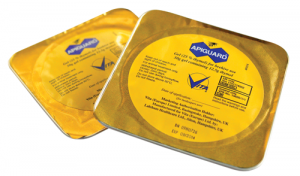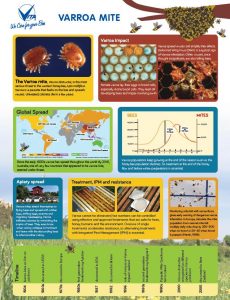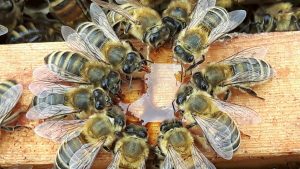News
Vita 2016 Photo Competition Winners
The overall winner of Vita’s 2016 international photo competition is Lester Quayle with his image of industrious housekeeping honey bees. May Smith is the under-16 winner for her striking photograph of a pollen-carrying honey bee just landed on a brood frame.
Entries will appear in the limited edition 2016 Vita Calendar distributed to Vita’s global network and the winners. Some of the photos are below and a pdf file of the full calendar is available for free download to users of the Vita Gallery www.vita-europe.com/beehealth/gallery.
The 2017 Vita Calendar monthly line-up is:
Continue reading →
Vita donates eight sentinel hornet traps to Stroud beekeepers
Vita has donated eight ApiShield Asian hornet traps to a group of Gloucestershire beekeepers to help establish how far the latest threat to honey bees has spread in Britain.
Vita’s ApiShield traps replace existing hive floors and attract hornets, wasps and even robber bees in by side entrances where they become trapped under a wire mesh and cannot exit through the cone entrances. Meanwhile, the honeybee colony uses and protects the front entrance to the hive. Beekeepers can periodically inspect the traps to see if any Asian hornets have been caught.
Peter Lead of the Stroud Beekeepers’ Association said: “We have installed two ApiShield traps in our Association apiary and are distributing the others for use in the area. Last year, our Association apiary was plagued by a lot of wasps and, even after a few days, the ApiShields have already trapped a substantial number. There is no sign of the Asian hornet yet, but we are inspecting regularly. I particularly like the Vita hornet trap because, unlike bait lures, it is not adding an additional enticement for wasps and hornets to enter the apiary.”
VitaFeed Gold no longer available in the UK
 VitaFeed Gold, Vita (Europe) Ltd’s product to stimulate the development of honey bee colonies, will no longer be available in the UK and Germany for economic reasons. It is still available in many other countries.
VitaFeed Gold, Vita (Europe) Ltd’s product to stimulate the development of honey bee colonies, will no longer be available in the UK and Germany for economic reasons. It is still available in many other countries.
A recent decision by the British Veterinary Medical Directorate means that VitaFeed Gold must undergo the full regulatory process. While Vita is very supportive of regulatory controls of products and treatments for bees, the cost of the documentation and research required to gain regulatory approval for this particular product is uneconomic.
Technical Director, Dr Max Watkins explained: “Sadly, we have had to take a decision to cease sales of VitaFeed Gold in the UK for economic reasons. While the product has been very successful in strengthening honey bee colonies and is praised by many beekeepers, the cost of putting it through the regulatory process would mean that we would have to raise the product price to levels which we believe would not be acceptable to beekeepers. With regret, we have therefore decided to withdraw the product from the UK market. It is however available in many other countries.”
All other Vita products, including Apiguard and Apistan varroa treatments, remain unaffected because they already have regulatory approval where required.
First varroa treatment approved for use in Australia
 Apiguard, the organically-approved varroa control treatment from Vita (Europe) Ltd, has just been approved for use in Australia. It is the first varroa control product to be approved by the Australian authorities.
Apiguard, the organically-approved varroa control treatment from Vita (Europe) Ltd, has just been approved for use in Australia. It is the first varroa control product to be approved by the Australian authorities.
Based on thymol and delivered in a slow-release gel, Apiguard is extremely easy to use and very effective in controlling varroa populations. It is a proven worldwide success, has been through a rigorous authorisation process and is successfully used in up to 60 countries across the globe.
Varroa Infographic

This is a low-res jpg image only. For the full size pdf file, please register (free) and download from the Gallery.
Vita has created an infographic about varroa. It’s free and downloadable from the Vita Gallery. It is the second in an infographic series; the first was a Swarming Infographic.
Go to the Vita Gallery to download the Varroa Infographic
Sebastian Owen of Vita (Europe) Ltd said: “Following the very positive response to the first Vita infographic in swarms, we’ve created another. We encourage anyone to download it, print it out and use it wherever they like. Varroa is beekeepers’ greatest pest – it cannot be eliminated, but the more beekeepers know about it, the easier it will be to control.”
See Vita on:
Facebook: https://www.facebook.com/vitaeurope/
Twitter https://twitter.com/vitaeuropeltd


